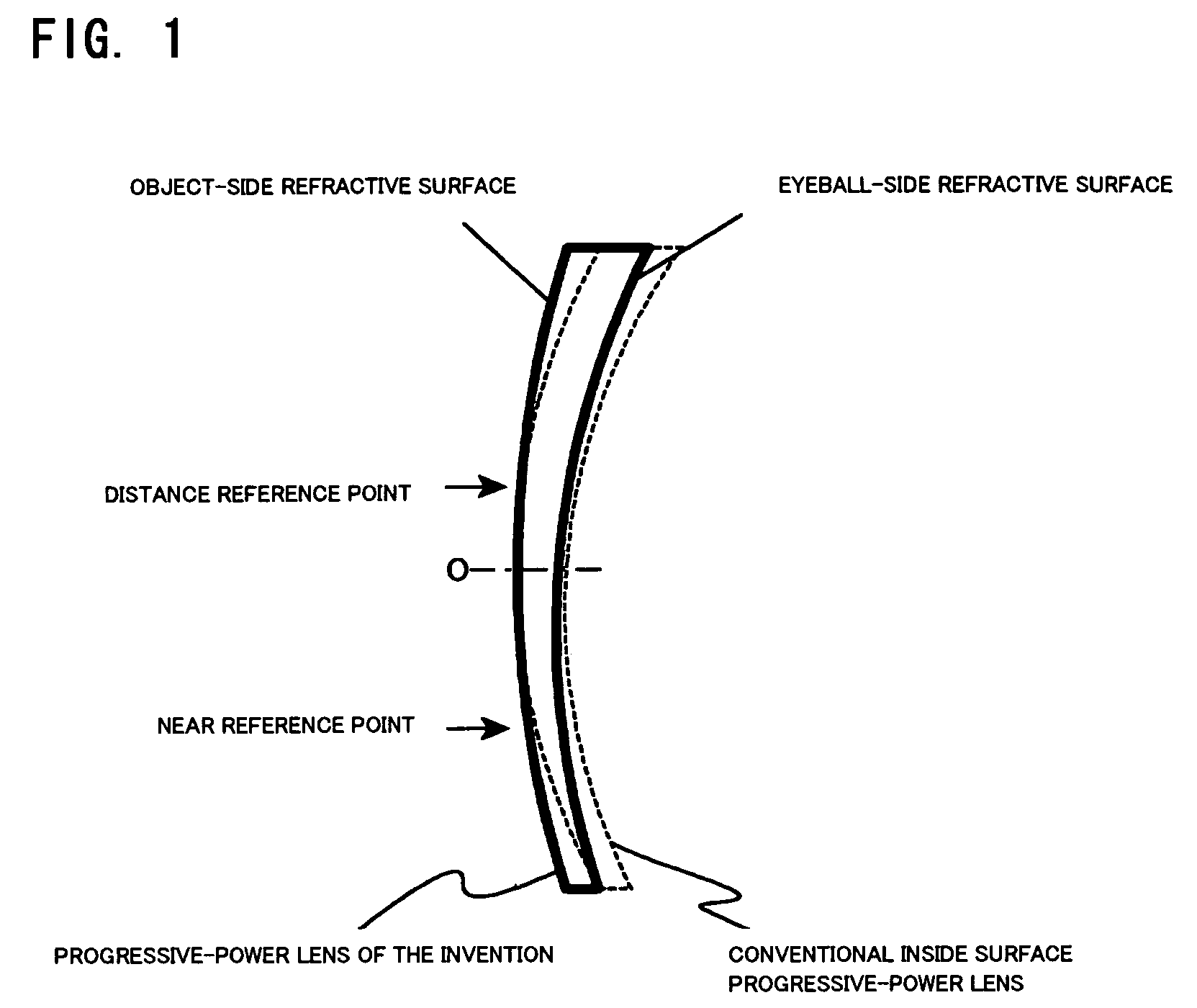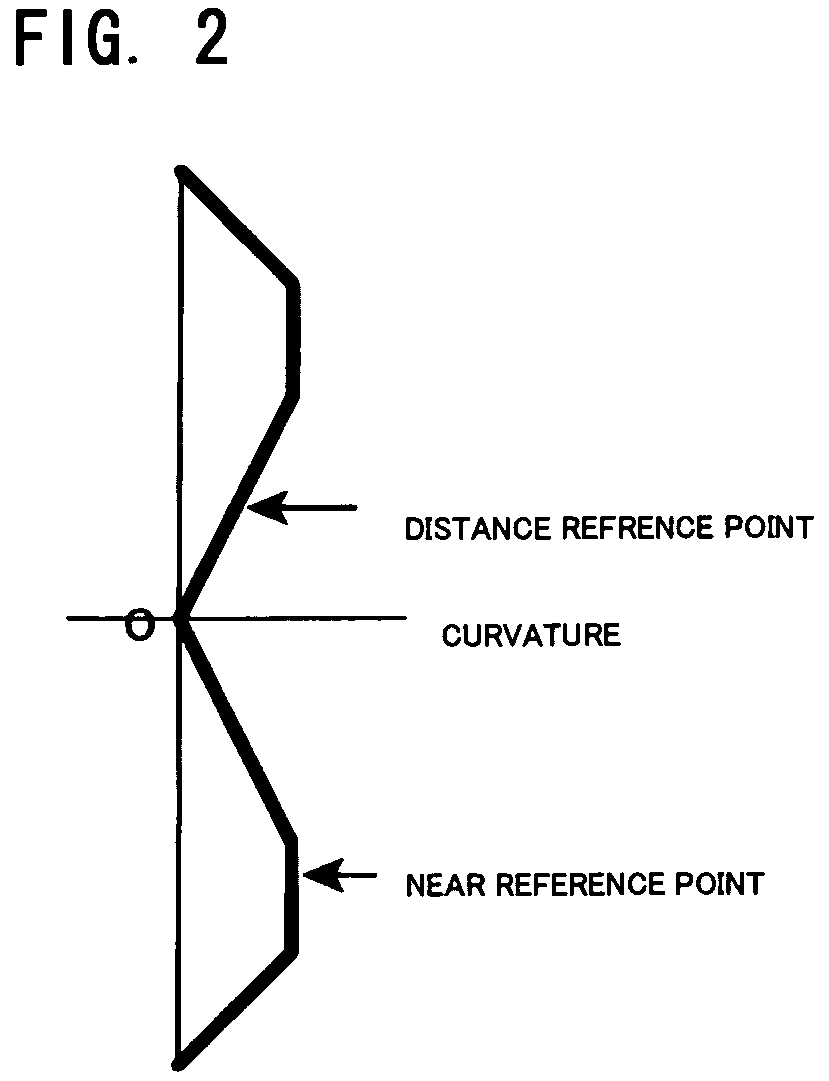Progressive refractive power lens
a technology of power lens and lens thickness, applied in the field of progressive power spectacle lens, can solve the problems of inferior lens thickness and appearance, power lens may have a sense of incongruity, and the surface having a radius of curvature larger than 1.5 m cannot be processed, and achieve the effect of low cost manufacturing
- Summary
- Abstract
- Description
- Claims
- Application Information
AI Technical Summary
Benefits of technology
Problems solved by technology
Method used
Image
Examples
first embodiment
[0038]The present invention is now described in more detail. FIG. 2 shows curvature variation of an object-side refractive surface in a In this embodiment, an axis passing a geometrical center O of the lens corresponds to a symmetric axis for rotation. In the figure, the lateral axis indicates values of curvature, while the longitudinal axis indicates distance from the center of the lens. Thus, the upper portion in the figure shows the distance portion, whereas the lower portion shows the near and intermediate portions. The curvature variations are vertically symmetric with respect to the center O. The curvature at the distance reference point is smaller than that at the near reference point. For example, for manufacturing a lens having a distance power of 3.00 D and an addition power of 3.00 D, the surface power at the near portion of the eye-ball side refractive surface is set at the processing limit value of 0.45 D. As the lens having the distance power of 3.00 D and the additio...
second embodiment
[0040]FIG. 3 illustrates curvature variation of an object-side refractive surface in a In this embodiment, constant curvatures are obtained in a range of 5 mm in diameter from the centers set at the distance and near reference points. The distance and near reference points correspond to the points at which the power is measured for examining lens specifications by means of a lens meter or other apparatus. Since the lens meter generally makes a measurement at the minimum aperture of 5 mm in diameter, a stable measurement of power can be taken by reducing the variations in curvature in this range. From the study of the writer of this description, the tolerance of the power sometimes exceeds the standard values specified in Japanese Industrial Standard and International Organization for Standardization when the curvature varies through 0.25 D in this range. Thus, it is desirable to confine the variations of the surface power within 0.25 D in the range of 5 mm in diameter from the cent...
third embodiment
[0041]FIG. 4 illustrates curvature variation in a In this embodiment, monotonous increase in curvature from the rotational center till the outer periphery can be observed, providing lower improvement in lens thickness compared with the above-described embodiments. However, a highly simplified configuration of an object-side refractive surface allows the manufacturing cost to be reduced considerably.
PUM
 Login to View More
Login to View More Abstract
Description
Claims
Application Information
 Login to View More
Login to View More - R&D
- Intellectual Property
- Life Sciences
- Materials
- Tech Scout
- Unparalleled Data Quality
- Higher Quality Content
- 60% Fewer Hallucinations
Browse by: Latest US Patents, China's latest patents, Technical Efficacy Thesaurus, Application Domain, Technology Topic, Popular Technical Reports.
© 2025 PatSnap. All rights reserved.Legal|Privacy policy|Modern Slavery Act Transparency Statement|Sitemap|About US| Contact US: help@patsnap.com



